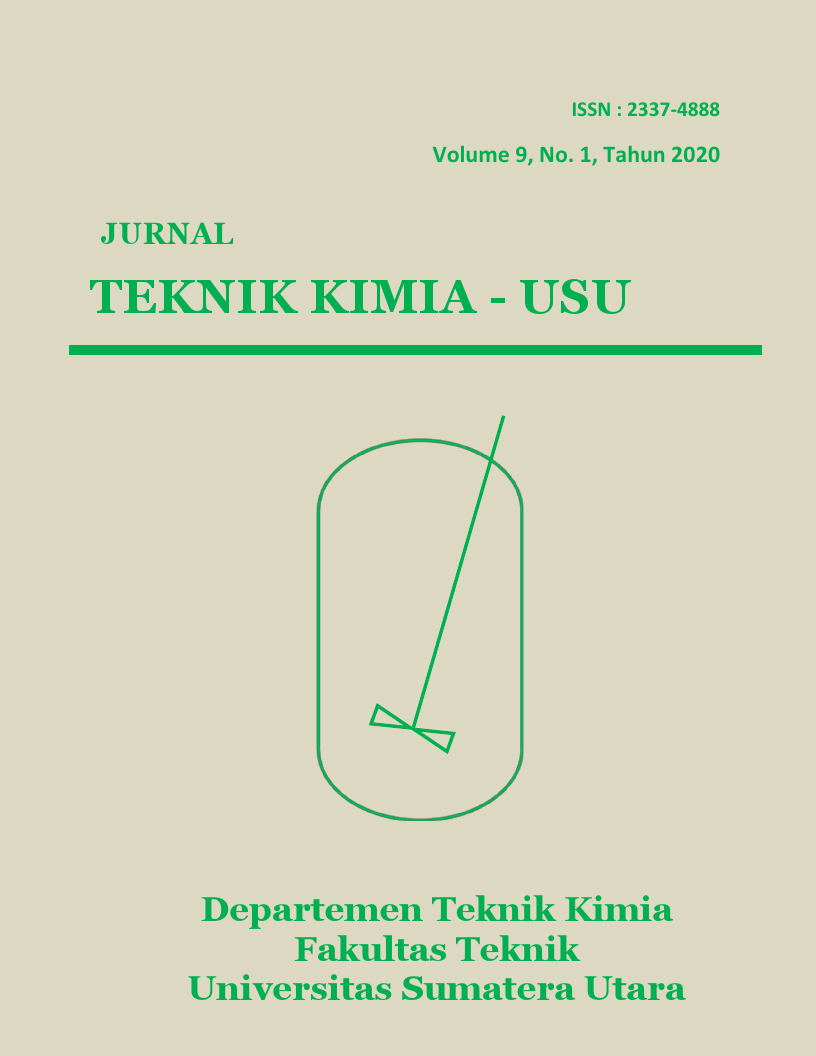Pengaruh Panjang, Bentuk, dan Jenis Batang pada Metode Pengapungan Batang dalam Mendeteksi Waktu Pemisahan Kerosin dan Air
DOI:
https://doi.org/10.32734/jtk.v9i1.3711Keywords:
buoyancy weighing bar, BWM, oil in water, separation timeAbstract
This study aims to apply the Buoyancy Weighing-Bar Method in detecting the best separation time for emulsions consisting of two different liquid densities, namely kerosene and water. In this method, the change in mass of the rods that are hung on the emulsion will be measured over time. Changes in rod mass occur due to bubble mass transfer due to differences in liquid density. The study examined the effect of rod type, rod shape and rod length in determining the best separation time between kerosene and water with a concentration of 2% kerosene in 98% water. The types of rods used are aluminum, copper, bronze and iron with a variety of rod shapes, namely cylinders, rectangular prisms, hexagon prisms, and sheets. While variations in rod length are 210 mm, 160 mm, 110 mm and 60 mm. Based on the results obtained, the kerosene-water separation time can be determined by the Buoyancy Weighing-Bar Method. The most accurate type of rod in determining the best separation time between kerosene and water is bronze with a length of 210 mm. In the variation of the rod shape, the resulting separation times are close together for each shape.

















